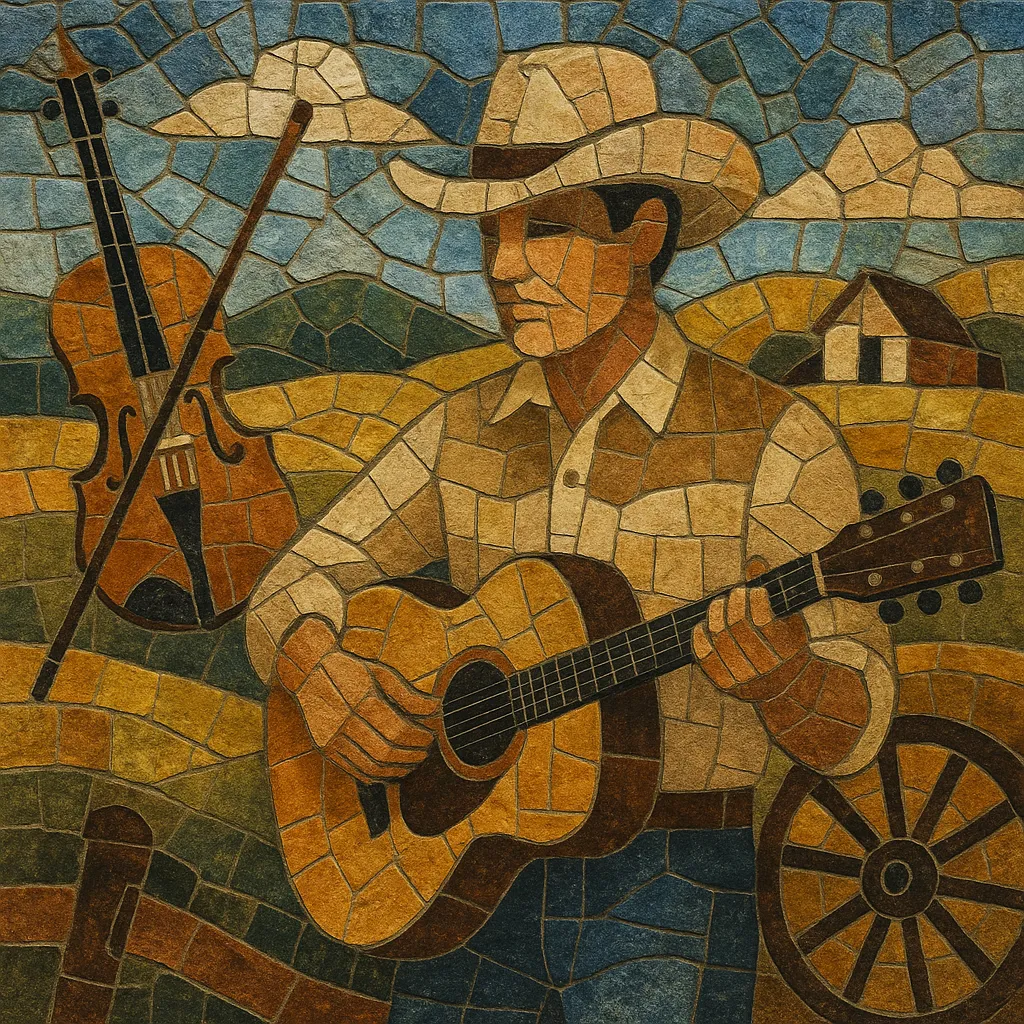
Traditional country is a roots-oriented branch of country music that preserves the acoustic timbres, plainspoken storytelling, and danceable rhythms of early "hillbilly" and honky-tonk styles.
It favors fiddles, acoustic and steel guitars, upright bass, and modest percussion, with melodies and harmonies grounded in Anglo-American folk, gospel, and blues. Songs typically revolve around everyday life—love, heartbreak, faith, work, and small-town or rural experience—delivered with an unadorned, emotive vocal style.
As a practice and ethos, traditional country resists pop sheen and elaborate production, emphasizing live ensemble interplay, two-step and waltz feels, and concise verse–chorus forms. Its sound is closely associated with the Grand Ole Opry era, barn-dance radio, and mid‑century jukebox honky-tonks.
Early recordings marketed as “hillbilly” music introduced the foundational vocabulary of traditional country. String bands, solo singer‑guitarists, and family groups synthesized Anglo‑American ballads, fiddle tunes, gospel hymns, and the blues into a distinctive rural style. Radio barn dances and traveling medicine shows spread the sound nationally, while institutions like the Grand Ole Opry anchored it in Nashville.
Postwar honky‑tonk established many of the genre’s defining features: amplified but still lean bands, walking or two‑beat bass, crying steel guitar, and direct, relatable lyrics. Jukeboxes and roadhouses made danceability essential, while independent labels and regional scenes (Texas, Louisiana, the Southeast) nurtured prolific songwriting and recording.
As the Nashville Sound added strings and smooth vocals for pop crossover, traditionalists maintained a tougher, barroom‑ready approach. On the West Coast, the Bakersfield sound sharpened guitars and rhythms while retaining core country traits. Radio, touring circuits, and television brought both approaches to mass audiences, with traditional country remaining a bedrock identity.
Even as outlaw country, country‑pop, and arena‑sized production rose, traditional country endured through veteran artists and periodic revivals. Neo‑traditionalists in the 1980s–1990s reaffirmed core instrumentation and writing. Today, classic methods—fiddle/steel interplay, two‑step tempos, and everyday storytelling—continue to inform Americana, alt‑country, and roots scenes, as well as global country offshoots.
Use acoustic rhythm guitar for steady “boom–chick” strumming, fiddle for melodic fills, pedal or lap steel for sustained, crying lines, upright (or electric) bass for a two‑beat or walking feel, and a small drum kit played with restraint. Add piano or mandolin sparingly.
Favor tempos that suit a two‑step (around 90–120 BPM) or waltz (3/4). Keep grooves simple and danceable: a firm downbeat, clear backbeat or train‑beat brushes, and a supportive bass that outlines roots and fifths.
Rely on diatonic major keys with I–IV–V progressions, occasional V/V and ii or vi for color. Melodies should be singable with clear phrasing, leaving space for call‑and‑response between voice and fiddle/steel.
Write concise verse–chorus structures with a memorable hook. Use instrumental turnarounds and short solos (8–16 bars) for fiddle and steel. Keep arrangements uncluttered so lyrics and voice remain central.
Tell plainspoken, relatable stories about love, loss, work, home, faith, and personal trials. Aim for concrete imagery and conversational language. Vocals are emotive and upfront, with subtle harmony on choruses.
Track live or live‑like with minimal overdubs. Favor dry rooms or light plate/spring reverb. Avoid heavy quantization or processing—imperfections that capture feel are welcome.

